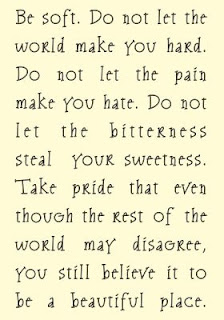President Obama to Visit Peru, Germany and Greece to Push for Trans-Pacific Partnership (TPP) https://t.co/BKOa7dSbNC via @bloombergbna— GlobalAwareness101 (@Mononoke__Hime) October 28, 2016
Bloomberg Bureau of National Affairs (BNA)
written by Rossella Brevetti
Tuesday October 25, 2016
Oct. 25 — President Barack Obama will travel to Peru Nov. 18-20 where he will meet with leaders of Trans-Pacific Partnership (TPP) member countries during the Asia Pacific Economic Cooperation (APEC) leaders' summit and underscore efforts to move the pact forward.
“The President will focus on his continued efforts to make the case to Congress and the American people for approval of TPP without further delay,” according to an Oct. 25 White House statement.
The president's trip to Peru comes as the TPP countries, all of whom are members of APEC, are pursuing their own pathways to ratification while the fate of the pact in the U.S. Congress is still unclear. Ambassador Tim Groser said recently that New Zealand is “well-advanced” in its parliamentary process of ratifying the pact.
The president has met with leaders of the TPP countries on the margins of the APEC summit every year since 2011, according to the statement.
The administration wants Congress to consider the 12-nation TPP pact during the lame-duck session. Senate Majority Leader Mitch McConnell (R-Ky.) and House Speaker Paul Ryan (R-Wis.) have said the vote won't take place this year on the current version of the pact.
Both Democratic presidential contender Hillary Clinton and her Republican opponent, Donald Trump, have come out again the deal, further complicating efforts for a lame-duck vote. But the president and his administration are still urging a lame-duck vote, warning that the U.S. will cede leadership to China if the deal is not ratified (188 ITD, 9/28/16).
Obama also will have bilateral discussions with Peruvian President Pedro Pablo Kuczynski. The trip will emphasize U.S. support for Asia-Pacific regional institutions and efforts at regional economic integration through trade liberalization.
The Obama administration's trade agenda and legacy have been cast into doubt by uncertainty about whether the U.S. Congress will consider the TPP this year and by growing opposition in Europe to the Trans-Atlantic Trade and Investment Partnership being negotiated between the U.S. and the European Union.
Quint Leaders Meet
The president will also visit Germany Nov. 17-18 and Greece Nov. 15-16. While in Germany, the president will have one last opportunity to meet with his “Quint” counterparts “to review a range of global issues,” according to the statement. The NATO Quint is a group consisting of five western powers: the U.S., France, Germany, Italy and the U.K. The meeting comes as the Trans-Atlantic Trade and Investment Partnership talks appear to have lost steam as a result of the Brexit referendum in the U.K. and continuing uncertainty over the EU's trade pact with Canada, which is viewed as a much easier lift than the TTIP.
Trans-Atlantic economic relations will be among issues discussed with German Chancellor Angela Merkel, the statement said. French President Francois Hollande has been a critic of TTIP, but Italian Prime Minister Matteo Renzi is a strong supporter of the pact.
In Greece, Obama will reaffirm U.S. support for ongoing efforts to place the Greek economy on a path to sustainability and renewed prosperity.
To contact the reporter on this story: Rossella Brevetti in Washington at rbrevetti@bna.com
*********
MarketWatch
written by Greg Robb
August 2, 2016
President Barack Obama on Tuesday said he looked forward to the effort to pass the Trans-Pacific Partnershi[p after the dust settles from the November presidential election and said analysts shouldn’t conclude the fight is over despite recent rhetoric on the campaign trail.
“Hopefully after the election is over and the dust settles, there will be more attention to the actual facts behind the deal and it won’t just be a political…football,” Obama said during a joint press conference with Singapore’s Prime Minister Lee Hsien Loong.
Obama said he has been able to pass critical legislation over his two terms in office.
“We’ve got a pretty good record of getting stuff done when I think it is important,” he said.
“People said we weren’t going to get the trade authority to even present this before Congress and somehow we muddled through and got it done and I intend to do the same with the actual agreement,” the president said.
Analysts said chances of passage of the TPP deal had dimmed in the wake of the two parties’ political conventions. The platforms of both parties included anti-TPP language.
Breitbart News, USA
written by Kevin Kearns
November 5, 2015
The text of the Trans-Pacific Partnership (TPP) free trade agreement is finally public, after years of President Obama’s secret negotiations and a refusal to share the text openly with Congress and the American people.
Unsurprisingly, the document is full of special deals for various U.S. trading partners, foreign corporations, and multinational U.S. businesses.
The TPP is anything but the free trade agreement it purports to be. The use of the term “free trade,” however, is both a smokescreen to conceal what it really contains and a codeword designed in part to attract the support of Congressional Republicans who lurch zombie-like to support anything labeled free trade, without understanding or even examining the details.
The top Obama Administration trade negotiator, Michael Froman, admitted as much when he insisted the deal cannot be re-negotiated, particularly over the lax rules on importing foreign-made autos and auto parts into the United States.
Apparently, one of America’s biggest economic problems is that Toyota does not sell enough cars and trucks here, and thus does not displace enough American jobs. The TPP deal allows Toyota a special concession to keep its global supply chain intact. TPP lowers the already too low NAFTA parts content standard, and permits Toyota to export vehicles to the United States that contain a large percentage of parts produced in non-TPP countries. And so, other Asian countries such as China, who are not even TPP partners are beneficiaries. Hard to believe, right?
U.S. auto makers and Congressional Democrats are unhappy with the concession and want it renegotiated. But according to Froman, “Here we have 12 countries, half of whom we already have free trade agreements with, where every issue is tied to every other issue. You pull the string out on one of these issues and you unravel the whole thing.” Thus Froman admits that the TPP deal is shot through with favoritism and crony arrangements…but it can’t be altered.
A real free-trade deal could be written on a single sheet of paper, with commitments to remove all tariffs and non-tariff barriers of any kind — including the removal of Value Added Taxes (VATs) applied to American exports at the port of entry — and pledges to refrain from the currency manipulation that cheapens and subsidizes the cost of foreign exports. But is the TPP one page — or even two? No, it contains thousands of pages and 30 chapters, only a few of which deal with tariff reduction.
The other chapters deal with rules and regulations for all manner of things not directly related to trade. For example, there are labor and environmental chapters hailed by President Obama as the “most progressive ever.”
But the big problem, whether one is for or against these chapters in principal, is that the president is deceiving us. These chapters are completely unenforceable. Are we really going to have a fleet of labor rights and environmental inspectors cruising around Vietnam, checking to make sure that every last factory is being fair to its workers and not polluting? Or tramping through the jungles of Malaysia to make sure that the government has put an end to the human trafficking and forced labor camps? No, it’s just not humanly possible.
Incidentally, there are two major missed opportunities within the TPP. And these have to do with the United States not using a Value Added Tax (VAT) and not manipulating its currency. Froman claims to have cut 18,000 tariffs in the TPP, but he has completely neglected the most significant tariff of all — foreign VAT taxation. All of the other TPP countries (except tiny Brunei) utilize a VAT tax system. This is a major trade barrier that imposes a direct tax on U.S. exports, but it is completely unaddressed in the TPP.
As for currency manipulation, the dollar is the world’s reserve currency and is freely traded in markets throughout the world. However, a significant number of TPP countries manipulate their currencies to give their goods a competitive advantage over American products.
But in the TPP, there are only side agreements to discuss currency manipulation via reporting requirements and consultative mechanisms. What these side deals mean is that a country can continue to intervene in currency markets, and then the U.S. can discuss the matter — without the ability to do anything about it. That is not a concession or an “extremely meaningful” accomplishment, as Froman has said. It is a surrender — at a time when the U.S. could have addressed the problem.
The TPP is being touted as giving a big boost to the American economy. That’s the rationale for doing the deal in the first place, right?
But there is no economic study or model that shows any big net benefit to the United States. There is one Peterson Institute study, cited by the U.S. Trade Representative, that shows a minimal 0.4 percent gain for the American economy by 2025. That’s hardly enough to start reducing our immense and growing $18 trillion national debt. And two U.S. Department of Agriculture studies show no net gain in agriculture from the TPP. Why sign the agreement if it doesn’t help with the national debt? Two words: Special Interests.
Ultimately, the TPP is a complex series of rules and regulations intended to manage the economic relations between the 12 nations party to the agreement. And its meticulous design serves to benefit each country’s “national champion” companies and industries, with the big winners in the U.S. being the major Wall Street banks, insurance companies, and multinational manufacturer-outsourcers.
One big example of this complex hypocrisy: The TPP has, in addition to 30 main chapters, a total of 58 side agreements (called “side letters.”) And Japan alone possesses 14 of these side letters, with each one laying out special conditions for Japanese participation and special deals for Japanese economic sectors. Free trade? Hardly!
Republicans allegedly hate regulatory regimes — but apparently are okay with them if they are done on an international scale under the rubric of free trade. What’s wrong with this picture and party?
Kevin L. Kearns is president of the U.S. Business & Industry Council (USBIC), a national business organization advocating for domestic U.S. manufacturers since 1933.






































No comments:
Post a Comment